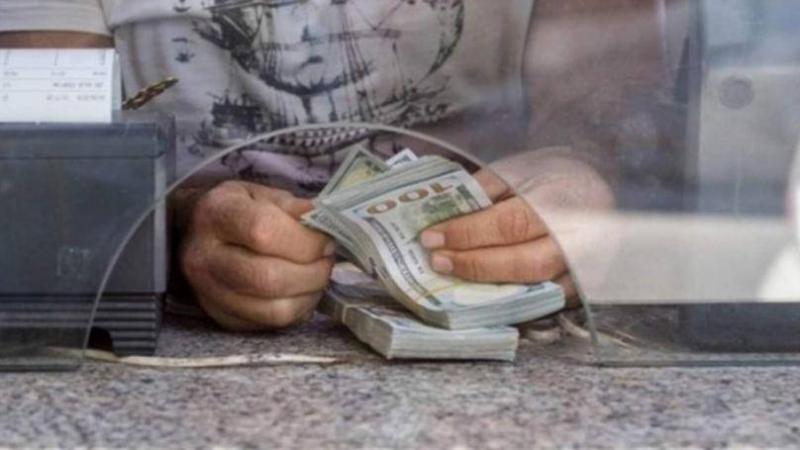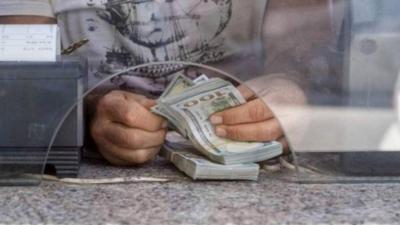It is difficult to determine the nature of the resolutions that will be issued by the Central Council of the Bank of Lebanon tomorrow, Monday, except for the widely circulated rumor about the intention to raise the exchange rate of the Sayrafa platform from 38,000 Lebanese pounds against the dollar, as it is currently, to approximately 45,000 pounds. This step indicates clearly the limited options remaining for the Governor of the Bank of Lebanon, who is trying to rely on collective decisions issued by the council instead of bearing the responsibility for the results alone, as has been the norm. The resort to raising the platform's exchange rate reflects a trend towards reducing the cost of the existing treatments after options have narrowed and it has become difficult to look for new solutions.
**Consequences of Raising the Sayrafa Platform’s Exchange Rate**
If the council's resolutions tomorrow are limited to raising the exchange rate of the platform, as many anticipate, the Bank of Lebanon will have taken merely a necessary step to ease the burdens of the phase on its budget and reserves, rather than seeking measures aimed at curbing the increases in the dollar exchange rate in the parallel market, as initially marketed in the media. From a practical standpoint, the implications of raising the exchange rate will include the following results:
- Reducing the value of the dollars used to pay salaries, which are converted from pounds to hard currency at the platform’s exchange rate, according to the provisions of Circular 161. Notably, raising the exchange rate from 38,000 to 45,000 would reduce this cost by 16% in one go.
- Decreasing the amount of dollars drawn from reserves when pumping dollars into the market and selling them at the platform’s rate, since this increase in the exchange rate would automatically reduce the liquidity needed in hard currency to purchase the same value of paper pounds. In this sense, the process of controlling the circulating money supply in local currency by absorbing paper pounds would be less costly and more extensive.
- Absorbing additional value from pounds by increasing the cost paid by public institutions when obtaining dollars at the platform's rate or at the platform's rate plus a certain margin, as in the case of financing fuel imports for Electricité du Liban.
- Increasing the fees and taxes paid to public institutions and facilities, which are based on the platform’s exchange rate, thus further absorbing paper pounds for the benefit of these institutions and facilities.
- Reducing the gap between the platform exchange rate and the parallel market rate from 21,300 pounds as it stands now to 14,300 pounds after raising the platform’s rate. It is worth noting that the Bank of Lebanon seeks to maintain an acceptable margin to keep the minimum realism in platform transactions and figures, preventing the platform's exchange rate from becoming an exaggerated support price, as was the case with the official exchange rate or the rates used to facilitate withdrawals from banks.
More clearly, everything that will result from this step will focus on enabling the Bank of Lebanon to continue applying the same treatments currently in use by restructuring their costs, potentially allowing the expansion of these same tools in the medium term. However, this will not offer new solutions, as indicated by the statement from the Governor of the Bank of Lebanon following his meeting with the Prime Minister and the Minister of Finance, when he noted that the meeting concentrated on explaining "the realities of financial markets in preparation for presenting proposals to the Central Council of the Bank of Lebanon in the scheduled meeting on Monday."
**Other Measures Ahead**
At the same time, banking sources indicate that the Bank of Lebanon will move next week towards implementing a series of measures aimed at reorganizing its intervention in the exchange market, including the implementation of a formula to withdraw from purchasing dollars from the parallel market for a few days, aimed at curbing the wave of rising dollar prices. It is known that the Bank of Lebanon's demand for parallel market dollars has represented one of the reasons that led to the tightness of dollar liquidity and the increase in its price in the markets.
It was clear in recent days that just the mere rumor of the Bank of Lebanon’s withdrawal from dollar purchases was sufficient to achieve a limited and noticeable decline in the dollar exchange rate due to the psychological effect of this news on speculative operations in the markets. However, such steps will remain within the scope of limited-scope maneuvers through which the central bank attempts to influence waves of demand for dollars for only a few days, without providing a real solution capable of leaving a significant mark.
At the same time, the Bank of Lebanon is betting on the end of the banks' demand for dollars once the new official exchange rate, set at 15,000 pounds to the dollar, is adopted. It is important to note that the banks' demand for dollars during the past period was related to their attempts to preempt the adoption of this rate to reduce the value of their negative exchange positions, which is the difference between their assets and liabilities in foreign currencies, and to mitigate the impact of this difference on their capital.
However, until now, despite the Bank of Lebanon's hope for the end of this wave of dollar purchases, it appears that the bank will not soon issue any circular to limit the banks' operations that affect the foreign currency liquidity supply. In any case, it is known that banks still have the ability to use the dollars they have or those they collect from the market to transfer them abroad, in the absence of any capital control law so far, which increases the risks of banks operating in the parallel market.
In conclusion, it does not seem that the coming week will bring many positive developments capable of curbing the current decline in the exchange rate, especially since all proposed ideas remain in the phase of mitigating the impact of this decline rather than stopping it. The main problem remains the blocked political horizon and the lack of any indicators suggesting a near exit from the current vacuum stage, in addition to the stalling of all financial pathways, which further increases the market's lack of trust in the future of the monetary crisis and the exchange rate of the Lebanese pound.




